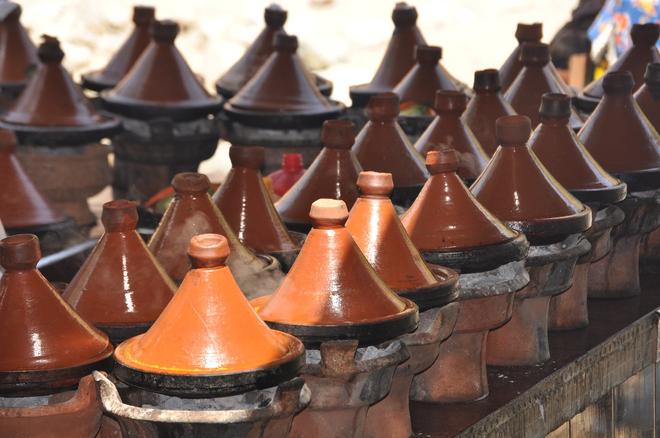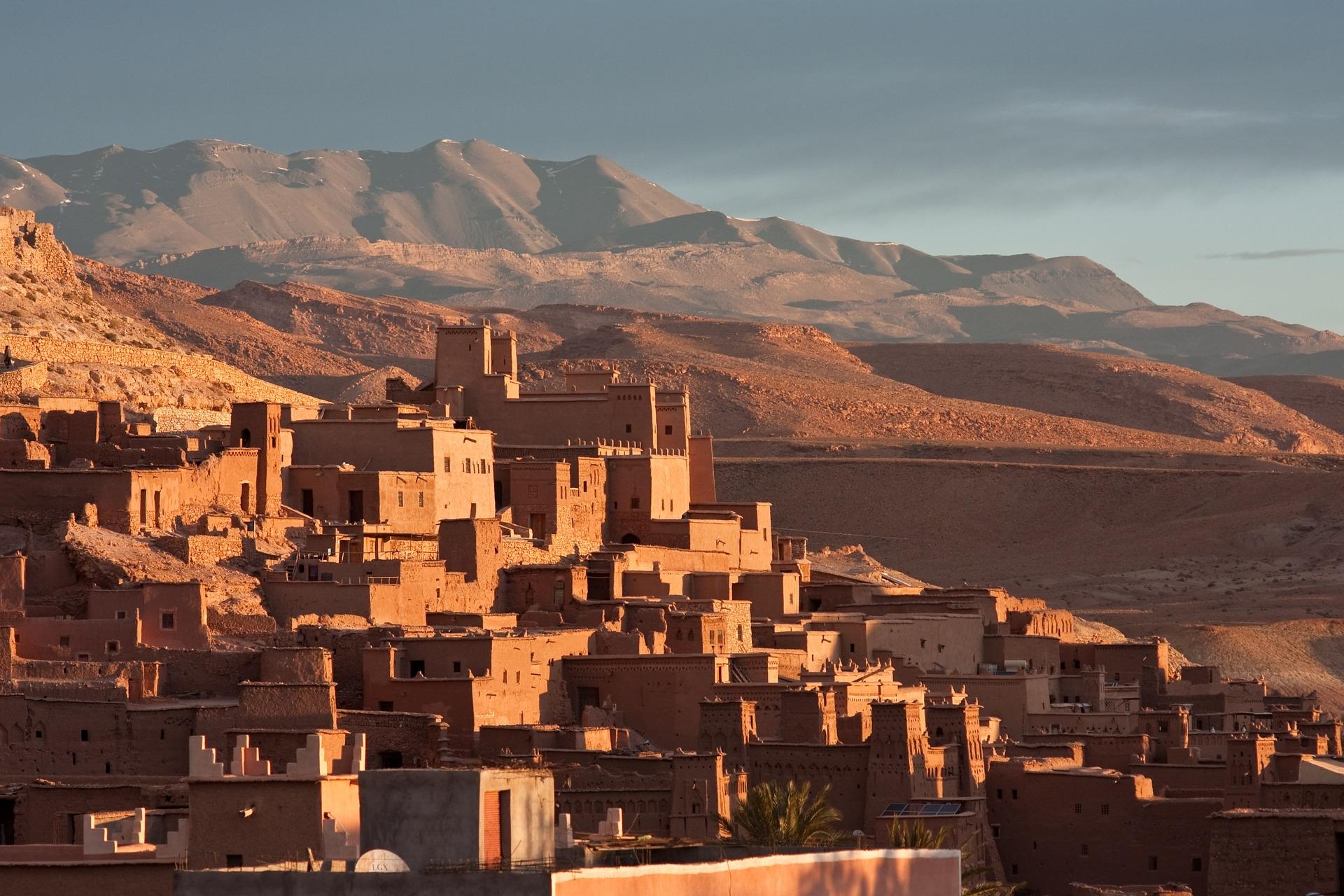Morocco will captivate you with its unique combination of diverse and beautiful nature and rich cultural heritage. Where else can you see the sea, 4,000-foot mountains, many types of deserts from sandy overhangs to rocky hammocks, well-preserved ancient monuments, unique Berber architecture in the form of kasbahs and ksars, rich Moorish architecture and "modern" art deco.
MoroccoThe best time to visit the country is in spring and autumn, when temperatures are pleasant and there is little rainfall on the coast. At the same time, you will avoid the oppressive heat in the central part of the country. From my personal perspective, spring is even a little better – not only because of the local blooming fauna and longer days, but the view from Marrakech of the picturesque remnants of snow in the Atlas Mountains is a real beauty. The spring season also has an advantage for mountain climbers who want to scale North Africa's highest mountain, Djebel Tubkal (4,167m).
How to get to Morocco?
In addition to air travel, you can also get to by car. However, the journey is somewhat lengthy, and not as cheap as it might seem. For this option, it is most convenient to take the ferry from Genoa, Italy, which will take you to the Moroccan port of Tangier in two days. As soon as the ferry lands in Morocco, you will be impressed by the hustle and bustle of the "Orient", yet I personally have never been very impressed by Tangier, and there is a considerable risk of being picked on by a clever pickpocket.
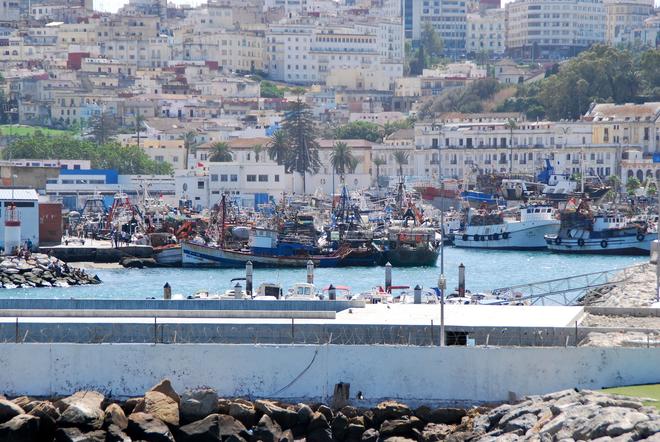
I recommend heading inland to the town of Shefsauen, hidden in the Rif Mountains. At first glance, you will be captivated by the sky-blue facades of its buildings. It has a very rich history – from a purely Muslim town, to a city that sheltered Jewish refugees from Spain, to the centre of a semi-independent 'emirate'. As well as the town itself, there are several interesting walking tours around Shefshauen.
Around Fes: Volubilis, Muláj Idrís and Meknés
We now travel further inland in Morocco from north to south and from east to west.
Idrís II, son of Mulláj Idrís, founded the important city of Fes nearby, which is famous for the largest medina in Morocco and the magnificent tanneries still in operation. Just under 100 km from Fes lies the UNESCO town of Volubilis, capital of the westernmost Roman province of Mauretania Tingitana. The site has been inhabited since the Palaeolithic period, with the Berbers and Carthaginians leaving their mark, but most notably the aforementioned Romans. The well-preserved Roman mosaics, the columns of the Capitol and the triumphal arch will delight you.
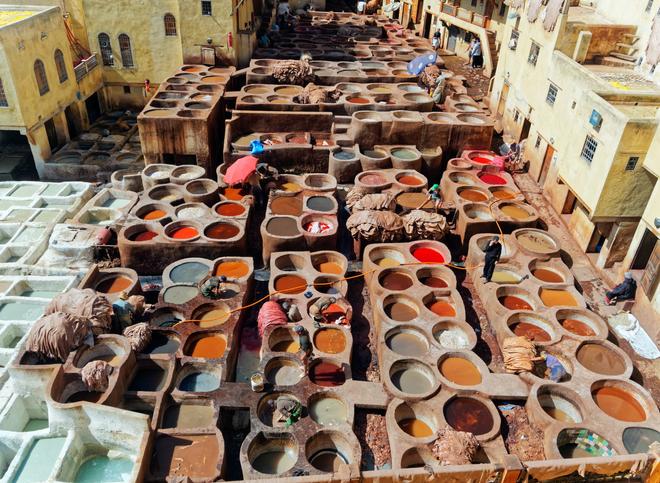
It should be noted that after the Romans, the city largely fell into oblivion, especially thanks to the neighbouring holy town of Muláj Idrís. Muláj Idrís is named after the great-great-grandson of Ali, son-in-law of the Prophet Muhammad, who settled here in 788, became the Imam of the Awraba tribe and founded the dynasty that ruled Morocco for centuries. He is also buried here, making Muláj Idrís the most important pilgrimage site in Morocco, and for many years an infidel was not allowed to stay overnight there. As a result, it has retained a strong spiritual atmosphere. To this day, Muslims often make pilgrimages to the mausoleum. According to the locals, making at least five pilgrimages to the Mullá Idrís can even replace the pilgrimage to Mecca, which is out of reach for many Muslims due to its high cost.
Also worth a visit is the nearby Royal City of Meknés, the seat of Sultan Moulay Ismail of the Alawite dynasty, who united most of the country and thus laid the foundations of modern Morocco. As soon as you enter, you'll be captivated by the monumental gates in the late 17th and early 18th century fortifications, palaces and picturesque medina. You can take a look inside Ismail's mausoleum or visit the Grand Mosque. In the surrounding area are the remains of large granaries and, in particular, the so-called Haras – huge stables from which Arabian thoroughbreds were delivered to the French court. It is said that up to several thousand horses were stabled here.
The Royal City of Marrakech
Inland, the royal city of Marrakech, which lies at the foot of the High Atlas Mountains, is not to be missed. The city was founded in the early days of the Almoravids in the 11th century, with a number of palaces, mosques and baths built by Cordoban architects and craftsmen. An underground water supply, known as a chettar, was also built. In the 12th century, the city was properly fortified with walls of red clay. The first travellers therefore often called it the "Red Pearl of the South". The city will enchant you with its picturesque Bahía and al-Badi palaces, the famous tombs of the Saad dynasty, the 12th-century royal gardens and several museums. Of these, I would most recommend the museum dedicated to Moroccan arts and crafts in the beautiful Dar Si Said Palace.
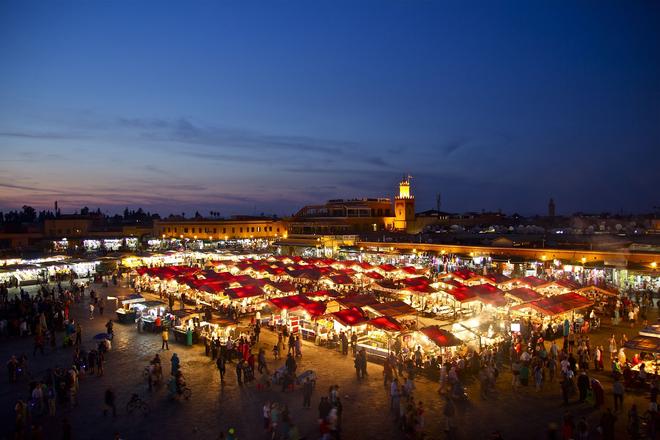
Jamaa al-Fna – open-air restaurant
The minaret of the Kutubiya Mosque directs you to Jamaa al-Fna - "Square of the Dead", whose name refers to the past when the heads of executed criminals were displayed here as a deterrent. Surrounding the square in winding alleyways are individual souks (markets) offering a plethora of items from handicrafts for tourists to everyday necessities. When shopping, one must arm oneself with patience and go through the standard "dance" of how much something costs: "No, that's too expensive" – "No, that's not too expensive, that's the best price, I'm already robbing my children and family with that price". The tactic that has worked best for me in haggling is the "woman and the impatient man who is tired of shopping".
The square itself starts to come alive as the sun sets, this is the perfect time to head here. You'll see jugglers, belly dancers, snake charmers, clowns, street musicians, astrologers, trained monkeys and more. On the edges of the square are stalls with artfully arranged fresh and dried fruit, nuts and olives. Part of the square becomes a great open-air restaurant in the early evening with a thousand tastes and smells. Smoke rises from the grills, the makeshift lights of the stalls flicker, all in a mysterious misty haze.
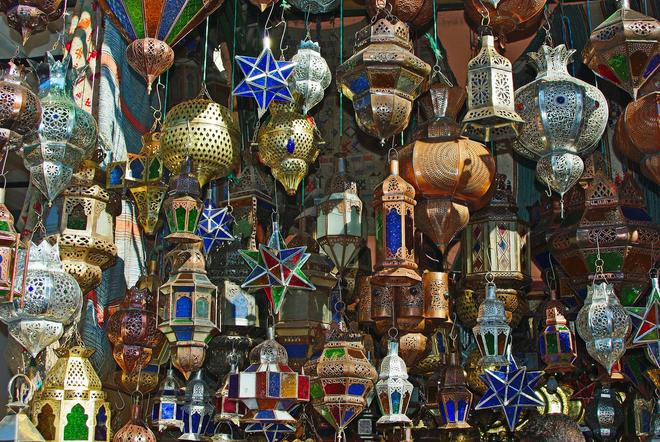
You can sample all the local specialties, such as babbouche (traditional snail soup), merguez (spicy sausages), makouda (fried potato patties), boiled ram's heads still steaming, zaalouk (eggplant and tomato salad), a plethora of grilled meats and salads. All washed down with traditional Moroccan tea – the so-called 'Berber whiskey', a strongly sweetened green tea (often gunpowder) with one type of herb or spice. Most often you will find mint to cool you down on hot days, sprigs of fresh wormwood, dried lemon verbena, star anise or even saffron pistils.
Through the Atlas behind the casbahs
A mountain road built by the French army in 1936 leads from Marrakech through the High Atlas Mountains. It takes you over the high saddle of Tizi n'Tička, 2,260 metres above sea level. The road is kept passable even in winter, as the main road to the interior. The road is truly a masterpiece of engineering and as a bonus you can enjoy many beautiful views.
At the foot of the inland part of the High Atlas and further towards the desert there are many unique structures, called kasbahs and ksar, built mostly of bricks made of unfired clay and stones.
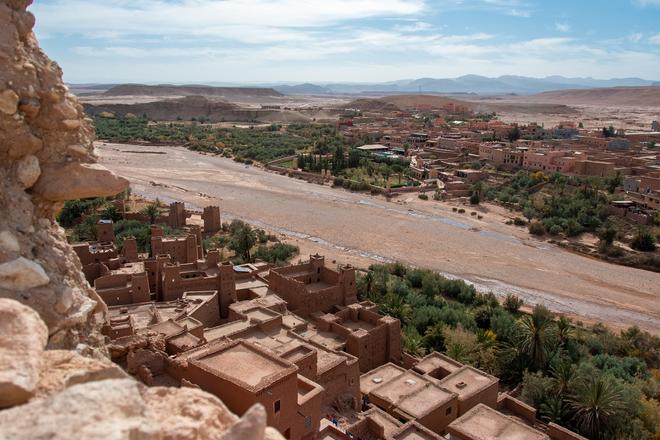
While a kasbah is usually a fortified house with several floors belonging to one family and its servants, a ksar is an entire fortified village with many houses, granaries, a marketplace, stables and other necessary facilities. I like best the casbah of the Glaoui family at Teluet, standing forgotten in a fertile part of the High Atlas, full of palm, fig and olive trees near one of the many old trade routes. I am fascinated by the stark contrast between the gradually crumbling adobe exterior and the still well-preserved interior with its mosaics, inlaid floors, stucco and marble columns.
The real Sahara: off-road to desert cities
South of the Djebel Saghro massif are Morocco's most extensive sand dunes – the so-called Erg Shigaga. The road into the desert follows the footsteps of the famous caravan trail to Timbuktu in Mali. In fact, in the town of Zagora you can also take a picture of the famous "road sign" with the inscription "Tomboctou 52 Jour". That's how many days it took the caravans to cross the Sahara.
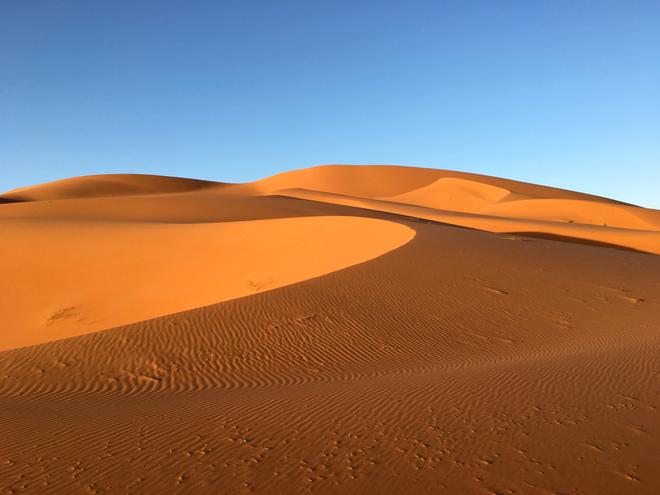
The earthen village of Amzrou with its Jewish quarter, including the gradually renovated synagogue, is also very interesting. In the village, the jewellery workshop and the carpet factory are worth a visit. In the Berber town of Tameghrut, the site of the 17th-century Sufi scholarly brotherhood of Nassiriya, there is a unique Koranic library, which used to house over 40,000 books and writings. In addition to the library, the town is famous for its ceramic workshop, which has been producing traditional 'green' pottery for centuries. Be sure to let them explain the unique way it is made. The night is best spent right in the middle of the sand dunes of Ergu Shigaga in one of the Bedouin tents that can be rented as a "hotel", including a great dinner.
You can take the Sahara Pista to the desert town of Foum Zguid. Offroaders will be thrilled by the challenging crossing of the dune field. The dry Lake Iriki will show you a true "mirage" with silhouettes of poisonous giant colotrophs. There are also several fossil sites in the area where you can find your own. There are many unique rock carvings around the Akka Oasis that are worth seeing. To find them you need to use the services of local guides.
Argan oil – a Moroccan treasure
And if I had to single out something else that I haven't mentioned but can't be missed in Morocco? To see how women produce argan oil in the sweatshops in the Antiatlas mountains, to taste tajine (slow-braised meat with vegetables over charcoal in a special pot of the same name) by the roadside and homemade couscous, which each family prepares a little differently and has its own super-secret ingredients, to rest and relax in the hammam (traditional baths) and to accept in advance that going to Morocco once is simply not enough!
